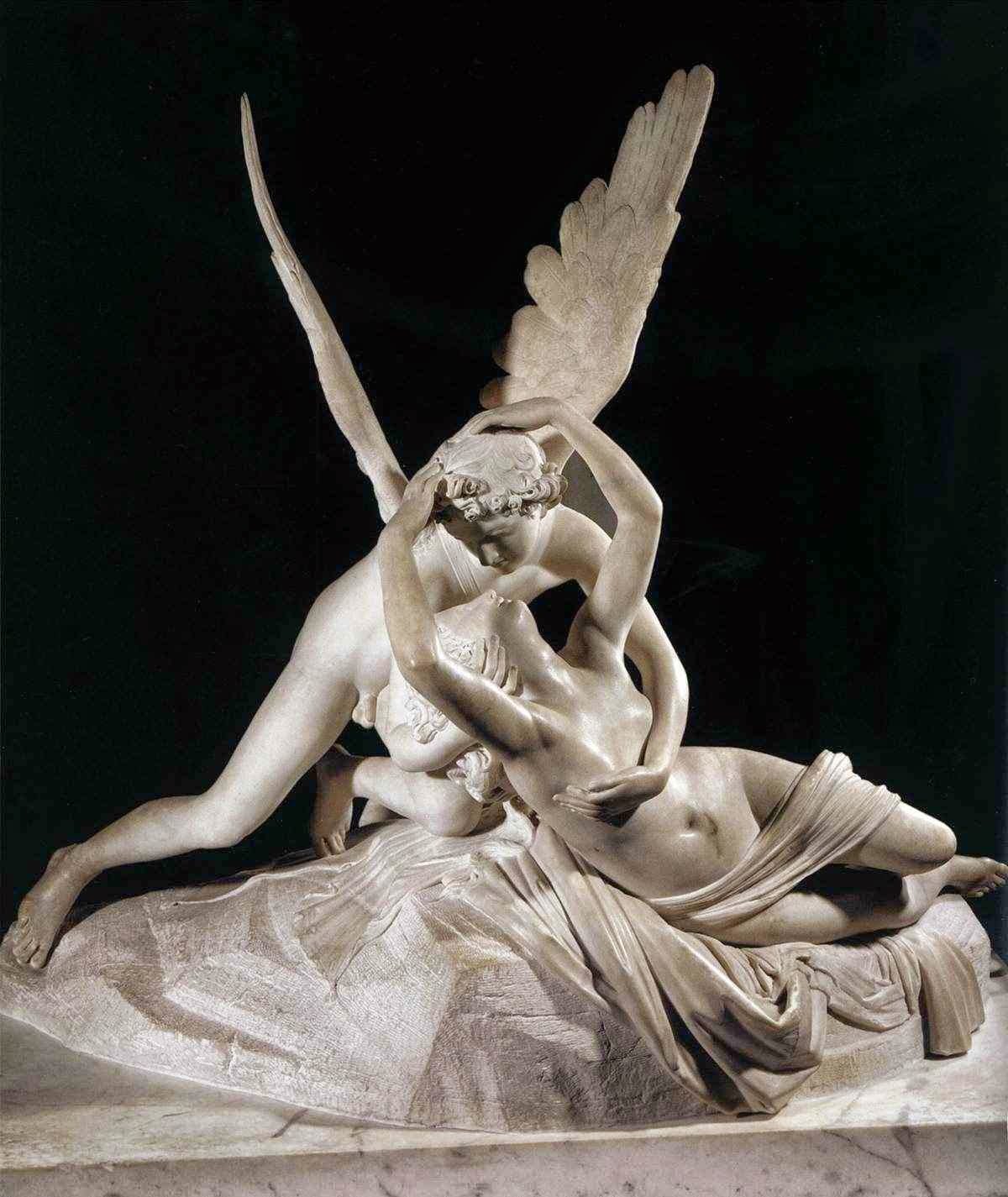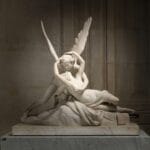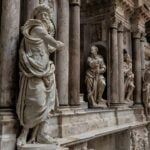Antonio Canova’s Psyche Revived by Cupid’s Kiss is more than just a sculpture; it’s a narrative etched in marble, a testament to the enduring power of love and rebirth. This iconic work, imbued with the spirit of Neoclassicism yet hinting at the nascent Romanticism to come, captures a pivotal moment in the mythical love story of Cupid and Psyche. Canova’s masterful carving technique breathes life into the stone, transforming it into a poignant portrayal of human emotion and the triumph of love over adversity.
The Timeless Myth of Cupid and Psyche
The story of Cupid and Psyche, as recounted in Apuleius’s The Golden Ass, is a tale as old as time. Psyche, a mortal woman of exceptional beauty, aroused the ire of Venus, the goddess of love. Aphrodite, consumed by jealousy, commanded her son, Cupid, to make Psyche fall in love with a monstrous being. However, Cupid, upon seeing Psyche, was so captivated by her beauty that he accidentally pricked himself with one of his own arrows, falling deeply in love with her.
Their love was a clandestine affair, shrouded in secrecy. Cupid visited Psyche only under the cover of darkness, forbidding her from ever gazing upon his divine form. However, fueled by the insidious whispers of her envious sisters, Psyche broke her promise. One night, while Cupid slept, she lit a lamp, revealing the god in all his splendor. A drop of hot oil from the lamp startled Cupid, who, feeling betrayed, fled.
Heartbroken and desperate to reunite with her beloved, Psyche embarked on a perilous quest orchestrated by a vengeful Aphrodite. She endured a series of grueling trials, testing her resilience and devotion. One of the most harrowing tasks involved a descent into the Underworld to retrieve a box containing Persephone’s beauty secrets. Psyche, against all odds, succeeded. However, overcome by curiosity, she opened the box, only to be enveloped by a death-like sleep.
It was then that Cupid, who had never truly ceased to love Psyche, found her. He gently brushed away the lingering sleep and revived her with a divine kiss – a kiss that symbolized not only her awakening but also the enduring power of love to conquer even death itself. This act of forgiveness and devotion ultimately led to Psyche’s ascension to immortality, uniting her with Cupid forever.
Canova’s Masterpiece: From Myth to Marble
Canova’s Psyche Revived by Cupid’s Kiss, commissioned in 1787 by Colonel John Campbell, immortalizes this pivotal moment of resurrection. The sculpture captures the tenderness of Cupid’s embrace as Psyche awakens, their intertwined bodies a testament to the power of love to overcome even the greatest of obstacles. The delicate lines of Psyche’s figure and the gentle curve of Cupid’s wings evoke both the fragility and enduring strength of their bond.
Canova’s meticulous carving technique is evident in the contrasting textures of smooth skin, flowing drapery, and the rough, natural-looking base. The sculpture’s rotating base, a testament to Canova’s innovative approach, allows viewers to appreciate the artwork from all angles, experiencing the narrative from every perspective. This attention to detail, combined with the emotional depth conveyed in the figures’ expressions, elevates the sculpture beyond mere representation, transforming it into a powerful exploration of love, loss, and redemption.
Exploring Canova’s Artistic Legacy
Canova’s Psyche Revived by Cupid’s Kiss exemplifies the Neoclassical style, with its emphasis on idealized beauty, mythological themes, and precise anatomical detail. However, the sculpture’s raw emotional power hints at the burgeoning Romantic movement, suggesting Canova’s role as a bridge between these two artistic eras. He wasn’t merely recreating the past; he was forging something new, infusing classical forms with a depth of feeling that resonated deeply with his contemporaries.
Multiple versions of Canova’s Cupid and Psyche sculptures exist, each offering a unique interpretation of the myth. These variations, including the renowned version housed in the Louvre Museum (acquired in 1824) and another version acquired by Prince Yusupov in 1796, showcase Canova’s evolving artistic vision and the enduring popularity of the Cupid and Psyche theme. Some versions emphasize the tender moment of Psyche’s awakening, while others, such as the standing embrace, highlight the ongoing nature of love as a continuous journey of connection and growth.
Ongoing Research and Interpretations
While much is known about Canova’s Psyche Revived by Cupid’s Kiss, ongoing research continues to shed light on the artist’s process, intentions, and the sculpture’s cultural impact. Art historians study Canova’s preliminary sketches, the tools he employed, and the various versions of the sculpture, seeking deeper insights into his creative process and the evolution of his ideas. This ongoing exploration underscores the dynamic nature of art historical inquiry, reminding us that our understanding of these masterpieces is constantly evolving.
For centuries, people have marveled at the Dionysus feast painting that vividly depicts the ancient Greek god of wine and revelry. Explore the intricate details of the Douglas TBD Devastator at the Naval Aviation Museum Pensacola. This historic aircraft played a critical role in the Battle of Midway.















